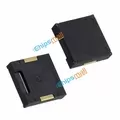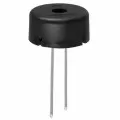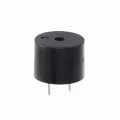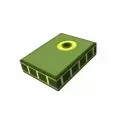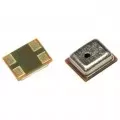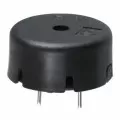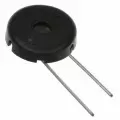OUTLINE:
How to Extend Speaker Wires [Find it here]
 280
280Have you ever tried to set up a stereo, only to find the wires weren't long enough? Don't you want to redo the whole room for sound quality?
Extending the speaker wire sounds a bit cumbersome, but in fact, in the right way, super simple and effective. Let's talk about how to extend the speaker wire and make your sound effect great!

Image Source:Sound Certified
What Are Speaker Wires [Definition&Materials]
Speaking of speaker wires, those are the wires that carry sound from the speaker to the speaker. They're super critical to your sound system, making the sound loud and clear.
When choosing a speaker wire, you have to pay attention to these points:
Electrical conductivity: Wires need to be able to conduct electricity smoothly, so conductive materials like copper are great.
Insulation layer: The outside of the wire must be wrapped with something to prevent short circuit interference, but also to protect the wire from being damaged.
Thickness: The thicker the line, the more electricity will be transmitted, the farther it will be transmitted, and the sound quality will not deteriorate.
Length: If the line is too long, the sound will be muted, so choose the right length.
When it comes to materials, copper is the most commonly used because it conducts electricity well and is cheap. Of course, there are other options, such as aluminum, which is cheaper but less effective; And silver, which works best but is too expensive.
Insulation material, PVC is cheap and durable, PE is better, Teflon is the best but the price is high. So, take these into consideration when choosing a speaker cable, and you'll be able to find the one that suits you best!
The Functions of A Speaker Wires
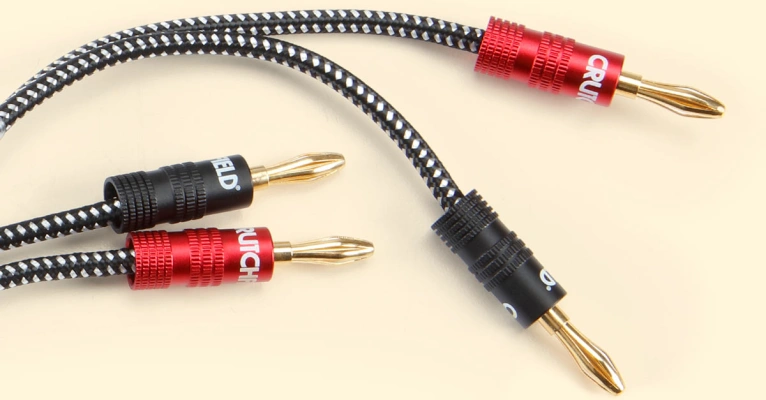
Image Source:Cruthfield.com
Speaker wire, to put it bluntly, is the cable that connects the stereo to the speaker. Its role can be large, like a "sound porter", the good sound in the stereo is sent to the speaker there, so that the speaker sings loudly.
First of all, it can transmit sound signals to ensure that the music and movie sounds you hear are original. If this line is not working, the voice may become stale and sound unpleasant.
Secondly, it also protects the sound quality, making the sound sound clearer and purer. Imagine, if the quality of the line is poor, the sound may be staccato, or there is a noise, how uncomfortable.
In addition, this line is also very durable, and can adapt to a variety of display environments. No matter where you put the stereo, as long as the string is long enough and strong enough, the sound will travel steadily.
Finally, some advanced speaker wires can also make the sound better, such as making the treble brighter and the bass deeper. It's like adding spice to the sound to make it taste better.
So, don't underestimate this wire, it is an integral part of the sound system!
Where to buy quality speaker wires>> Speaker Parts Online Shopping: A Comprehensive Guide
List of Best Component Speakers for Car >> 12 Best Component Speakers for Car
5 Steps of Extending Speaker Wires
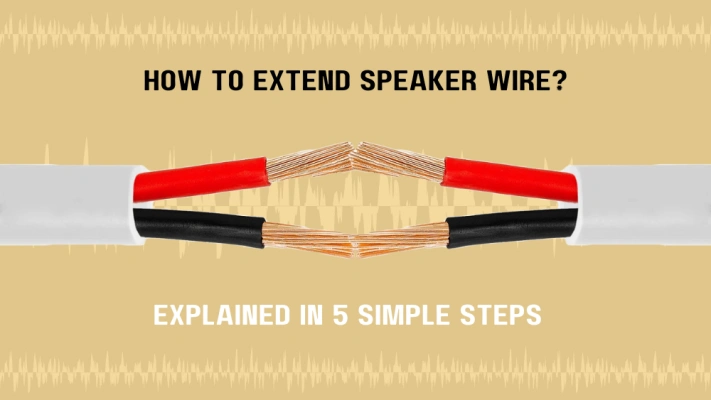
Image Source:Pinterest.com
Extending the speaker wire is actually quite simple, as long as you follow the steps. Here's how to effectively extend your speaker wire in five steps:
1. Prepare materials
Speaker wire: It has to be the same thickness and material as your original wire so the sound doesn't change.
Wire stripper: used to strip the insulation layer of the wire head.
Soldering iron and solder (optional but recommended) : Make the wire connector more secure and not easy to break.
Heat shrink tube or electrical tape: used to wrap the wire ends to prevent leakage.
Wire joint (optional) : If you do not want to weld, you can use this rotary or crimped joint.
2. Measure the length before cutting
Measure twice and then cut to ensure that the length is appropriate, but also a little more to facilitate wiring and deal with errors.
Cut with a good pair of scissors or wire strippers, and the thread should be clean and hairless.
3. Stripping of insulation
Use wire strippers to remove about half a centimeter of insulation without damaging the copper wire inside.
Both sides of the line should be peeled the same length, so that it looks neat.
4. Wiring
Twist the peeled ends together and then weld them on with a soldering iron for the strongest strength. Before welding, you can put on the heat shrink tube, and then blow it with a hot air gun after welding, and the heat shrink tube will be tightened.
If you do not want to weld, use a wire connector to connect, tighten and then wrap electrical tape.
5.insulation treatment
If you use a heat shrink tube, put the heat shrink tube on after welding and blow it with a heat gun. It looks professional and durable.
If you don't have a heat shrink tube, wrap several layers of electrical tape around the wire and keep it inside.
Bonus tip:
After connecting the line, don't forget to use the stereo to try to hear if the sound has changed.
If you extend a lot of lines, remember to mark which one is which, don't put it back in the wrong way.
Don't bend the wire too hard, the copper inside is easy to break.
Use a cable tie or clip to hold the thread in place and keep it from swinging.
How to Connect Multiple Speaker Wires Together
Here, I'll give you a super-down-to-earth guide on how to connect speaker wires securely and reliably:
Prepare materials
- Speaker wire: must be the same thickness and type, don't mix and match oh.
- Wire stripper: used to remove the skin from the wire end.
- Soldering iron and solder: If you want to make a strong connection, these two have to be used, and the welded joint is particularly strong.
- Heat shrink tube or electrical tape: used to wrap joints to prevent leakage.
- Wire cap or connector (optional) : If you don't want to weld, you can also connect with this, but it is not so strong.
- Cable ties or clips: Used to organize the threads so they don't get messy.
Wiring procedure
Preparation line
- Measure the length before cutting. Don't waste it.
- Use wire strippers to remove about half a centimeter of the wire end of the skin, do not hurt the copper wire inside.
Twist the wire
- If you want to connect several wires, divide them into pairs or tie them into small bundles.
- Then tighten the wire ends to make it easier to weld or connect the connectors.
Bonding wire
- The electric iron is hot, the wire is put on, the solder melts, and the whole joint is filled, so that the connection is the most reliable.
- Remember to wait until the solder cools down.
- If you do not want to weld, use a wire cap or connector, screw the wire end into it, and then turn or press it to fix.
Wrap joint
- If there is a heat shrink tube, first set a wire head before welding, and then blow with a hot air gun after welding, it will be tightened, especially beautiful and durable.
- If you don't have a heat shrink tube, wrap several layers of electrical tape around the joint so it doesn't show.
Finishing line
- Use a cable tie or clip to keep the thread out of a tangle, which is comfortable to look at and protects the thread from being torn.
Bonus tip
- Consistency: The lines all have to be the same, so the sound is good.
- Don't overload: When connecting a lot of speakers, see if the amplifier can be moved, don't tire it out.
- Pay attention to the positive and negative poles: red on red, black on black, don't connect the opposite, otherwise the sound will be strange.
- Test: Remember to play a song after listening, see whether each horn is ringing, the sound is clear.
- Line marking: If there are many lines, remember to mark which one is which one, and it is convenient to change it later.
- Find a professional: If it is a high-level audio, it is best to find a professional to get it, save yourself from messing up.
FAQs
Does Extending Speaker Wires Affect Sound Quality
Extending speaker wires can potentially affect sound quality due to increased resistance and potential signal loss. However, using the appropriate wire gauge and ensuring secure connections can minimize these effects.
What wire gauge should I use for extended speaker wires
The appropriate wire gauge depends on the length of the extension and the power requirements of your audio system. Thicker wires (lower gauge numbers) are better for longer distances to reduce resistance.
Is there A Maximum Length for Extending Speaker Wires
While there isn't a strict maximum length, longer speaker wires can lead to increased resistance and potential signal degradation. Proper planning and using the right wire gauge can mitigate these issues.
Are there Any Alternatives to Extending Speaker Wires
Yes, alternatives include using wireless speaker systems or relocating the audio equipment closer to the speakers to avoid the need for long wire extensions.
Final Verdict
Extending speaker wires can be a necessary task when reconfiguring or expanding a sound system.
Although extending the speaker wire may have some impact on sound quality, these effects can be minimized by choosing the appropriate wire gauge and ensuring a strong connection.
The key is to use thicker wires to reduce resistance, ensure the quality of the connection points, and properly isolate to prevent short circuits and signal interference.
Use speaker wires of the same specifications as existing wires, select suitable wire gauges, especially for long distances with low AWG values, ensure all connection points are strong, use welded or reliable quality terminals, and use heat shrink tubes or electrical tape for insulation protection.
Finally, the connected audio system is tested to ensure that there is no signal loss or interference. With these steps and suggestions, you can successfully extend the speaker cord while maintaining the high quality sound of your sound system.

Disclaimer: The views and opinions expressed by individual authors or forum participants on this website do not represent the views and opinions of Chipsmall, nor do they represent Chipsmall's official policy.

share this blog to:


